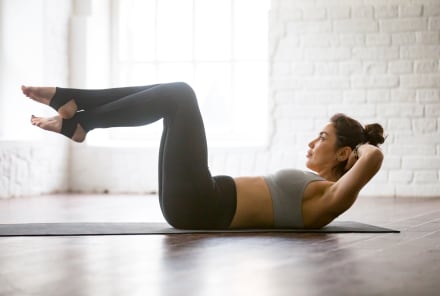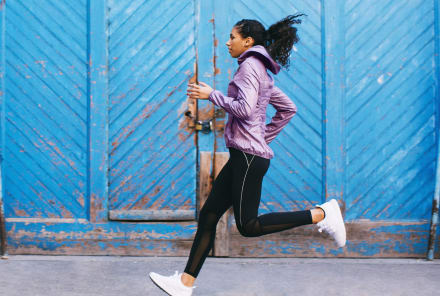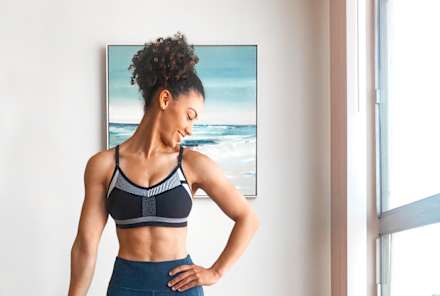Advertisement
After 13+ Years In Wellness, This Is What We've Changed Our Minds On The Most

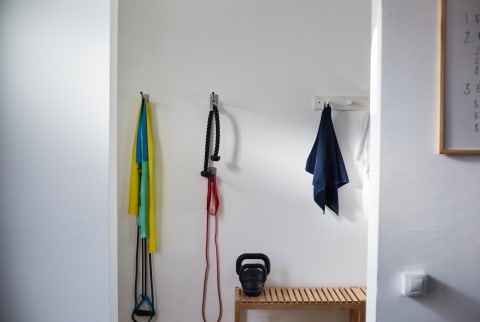
"So, what does your workout look like?”
This is a question we get a lot when we first meet people and they find out that we run a health and wellness company. Considering what a pillar of health physical activity is, this question is second only to "What diet do you eat? Keto? Vegan?"
Wherever small talk abounds—parties, conferences, school drop-off—we get these questions, and we brace ourselves for the disappointed looks we get when we answer. In the case of diet, there is no label for the way we eat; it's far too personalized to put in a box.
And in the case of exercise, we also don't strongly identify with a plan or a tribe, like CrossFitters or Peloton users. Instead, this is what we say: "We walk a lot, do a small amount of cardio, and do resistance training two to three times a week. We also have an unwritten rule that we take the stairs if it's under five flights."
Cue the confused looks and slight twitch of disappointment as their smiles start to droop. Pretty quickly after that, we see the raised eyebrows of skepticism, followed by "Wait... that's it?" When we confirm, "Yep, that's it," the conversation is usually over and on to the next topic.
The case for micro movement
The perception that you have to work out at the gym every day for at least 30 minutes and spend money on a membership/trainer/bike/tread was born of the fitness industrial complex and the distorted reality of the internet. Part of the reason we get such puzzled looks when we talk about our not‑a‑workout is cognitive dissonance.
After all, here we are, representatives of the wellness world, and yet what we do doesn't line up with people's understanding of what it means to be healthy. This is because their understanding comes largely from what healthy looks like on social media: an elaborate home gym with a Peloton, matching activewear sets, and, of course, rock-hard abs.
In reality, physical fitness and health don't require as much as we think. Take the world's best wonder drug for dementia: walking. A study of 78,430 adults living in the UK found that clocking around 10,000 steps per day (9,826, if you want to be exact) was correlated with a 51% risk reduction in dementia1.
What's more, just 3,800 steps per day was associated with a 25% reduction in dementia risk, and those who walked at a higher intensity (cadence) were associated with an even lower risk.
Every other day it seems there is a headline in the New York Times Well section that could pass for an Onion headline: "Stronger Muscles in 3 Seconds a Day," "Can 4 Seconds of Exercise Make a Difference?" or "A 2‑Minute Walk May Counter the Harms of Sitting."
As crazy as it sounds, these real headlines reflect a sea change in the scientific literature in the last 10 years that all points to shorter bursts of aerobic activity—done consistently—as being just as effective in promoting health as mindless cardio done for long periods of time. This is good news for anyone who lives in a time-crunched world of ever-encroaching lunch meetings and family, friend, and work obligations.
A shifting perspective on exercise
The same goes for resistance training. In fact, a meta-analysis of weekly weightlifting for strength showed that doing one session of weightlifting per week gave people nearly the same gains as working out multiple times.
Obviously, if you are lifting weights once a week, you're not going to be entering into any bodybuilding competitions anytime soon—but if you focus on the quality of that session, what you will do is build enough muscle mass to keep your body healthy and happy and be well on your way to lifting your own groceries at 85.
The biggest evolution over our 13 years at mindbodygreen has been a shift from mindful movement being the fitness routine to a bigger focus on strength and resistance training to build muscle for healthy aging protection.
For those just starting out, it's important to remember that something is better than nothing, but more is still better when it comes to improving health span.
One final word on why shorter, easier, and less financially fraught movement choices are a better way to go: habit building. Behavioral researchers and habit experts alike agree that the No. 1 thing you can do to sabotage a new habit is to make it too hard.
If you make it time-consuming, expensive, cumbersome, inconvenient, or just plain painful, it (of course) disincentivizes you from doing it again. In the moment it might seem like a good idea to push through a vigorous workout even though it hurts and you are tired, but it's actually sabotaging your ability to do any workout in the future.
You are chewing through all your motivation in one go instead of using little bites of motivation to help you lace up your shoes and take a pleasurable walk that you will look forward to doing again. For this reason alone, we're begging you to cancel the phrase "no pain, no gain."
The takeaway
So much of the popular conception of exercise frames it as a painful, joyless slog. These ways of exercising are giving movement a bad name and creating an unsustainable, unattainable ideal of what we have to do in order to be in shape and feel good.
Here's where we throw it all out the window and start over. Instead of having a rigid idea of what exercise looks like, focus on how you want to move in your life. Stop thinking about what you should do—what do you want to do?
It could be as simple as walking to work and taking the stairs because that's all the time you have in this stressful moment of your life. It could be joining adult gymnastics, it could be surfing in the summer and snowshoeing in the winter, it could be taking a walk in the woods while birding. Whatever you like to do and have time to do, do it.
Excerpted from The Joy of Well-Being by Colleen Wachob and Jason Wachob. Copyright © 2023 by Colleen Wachob and Jason Wachob. Reprinted with permission of Balance Publishing, an imprint of Hachette Book Group. All rights reserved.
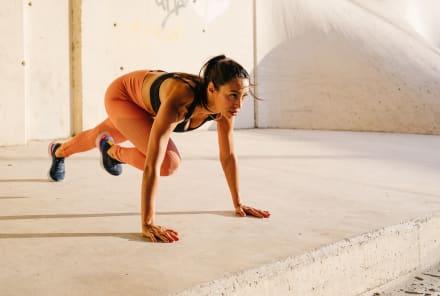
Short On Time? Try This Personal Trainer's 5-Minute Full-Body Workout
Krista Stryker, NSCA-CPT

Short On Time? Try This Personal Trainer's 5-Minute Full-Body Workout
Krista Stryker, NSCA-CPT

Short On Time? Try This Personal Trainer's 5-Minute Full-Body Workout
Krista Stryker, NSCA-CPT

Short On Time? Try This Personal Trainer's 5-Minute Full-Body Workout
Krista Stryker, NSCA-CPT

